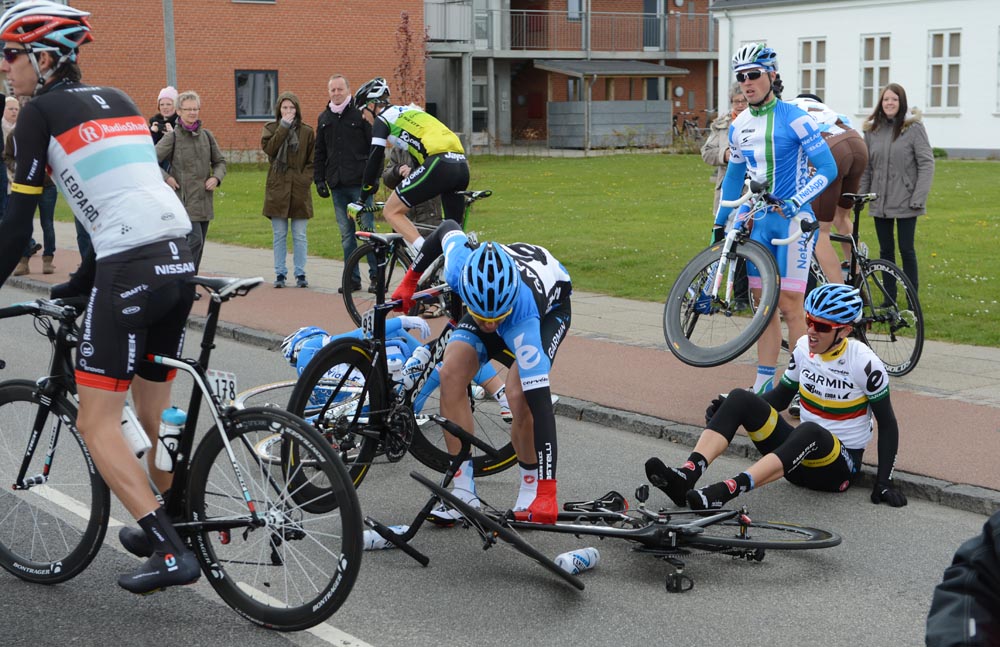Explaining the three kilometre rule


Bradley Wiggins rolled over the finish line at least one minute behind winner Peter Sagan in Boulogne-sur-Mer today.
Gaps had opened up in front of him and had it been a straight forward run in to the line he would have lost a good amount of time to the likes of Cadel Evans and Vincenzo Nibali who finished in the top ten on the stage, just behind Sagan.
So why did Wiggins cruise the last 400 metres, looking calm and relaxed?
Because Wiggins knows of UCI rule 2.6.026. This states that 'In the case of a duly noted fall, puncture or mechanical incident in the last three kilometres of a road race stage, the rider or riders involved shall be credited with the time of the rider or riders in whose company they were riding at the moment of the accident. His or their placing shall be determined by the order in which he or they actually cross the finishing line.'
>>>>Check out the Cycling Weekly Tour de France podcasts!
Wiggins was caught up (actually by one of his own team mates) when riders swerved to avoid the crash on the final climb at about 300m to go. He had to stop, put his foot down and get going again.
Wiggins rode in to the finish line slowly, conserving energy, as he knew he was safe, even though he didn't crash.
The latest race content, interviews, features, reviews and expert buying guides, direct to your inbox!
He came over the line in 53rd place and was given a time difference of one second to Peter Sagan, the same as his team mate Edvald Boasson Hagen, who finished second.
Related links
Cycling Weekly's Tour de France coverage index

Editor of Cycling Weekly magazine, Simon has been working at the title since 2001. He first fell in love with cycling in 1989 when watching the Tour de France on Channel 4, started racing in 1995 and in 2000 he spent one season racing in Belgium. During his time at CW (and Cycle Sport magazine) he has written product reviews, fitness features, pro interviews, race coverage and news. He has covered the Tour de France more times than he can remember along with the 2008 and 2012 Olympic Games and many other international and UK domestic races. He became the 134-year-old magazine's 13th editor in 2015 and can still be seen riding bikes around the lanes of Surrey, Sussex and Kent. Albeit a bit slower than before.